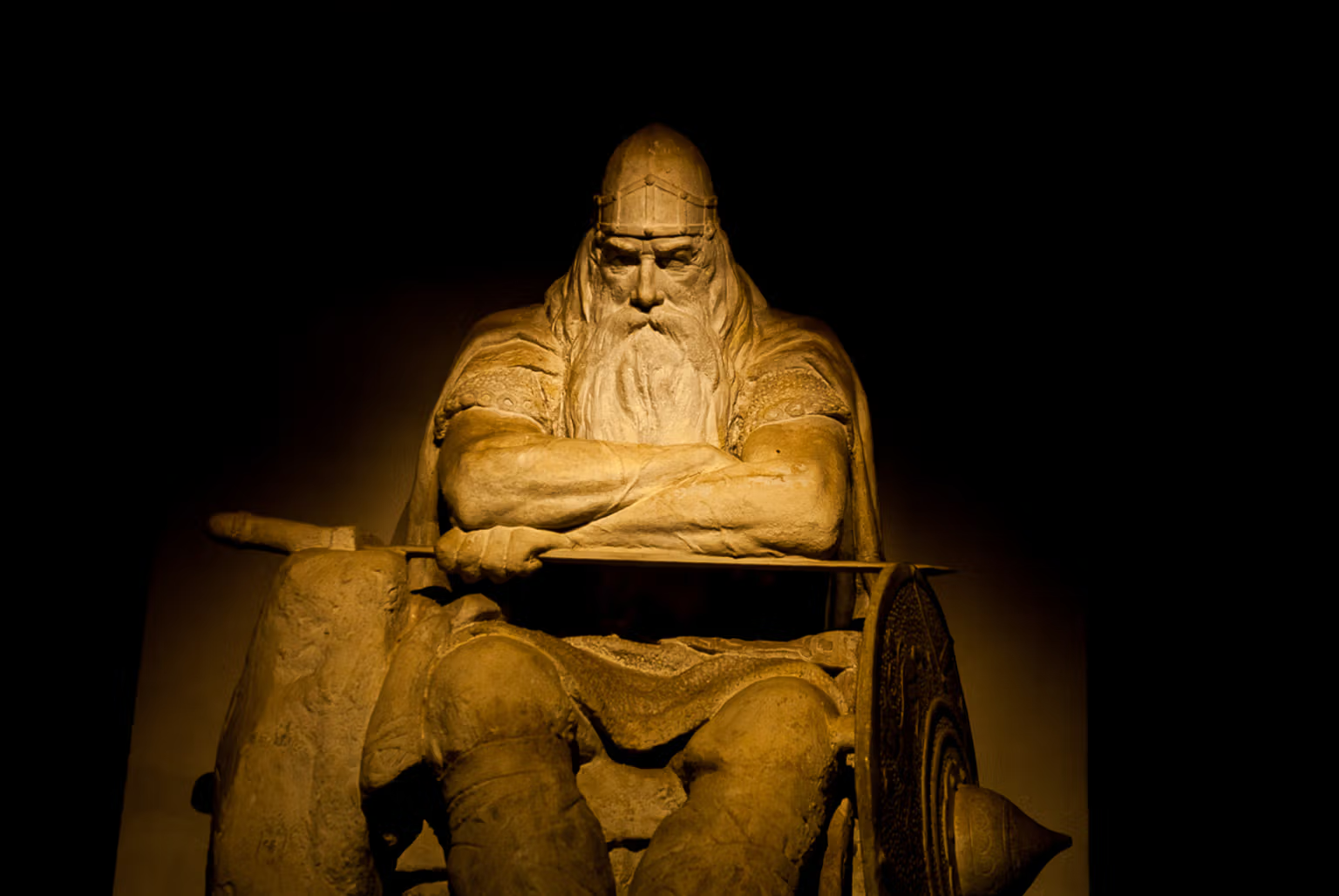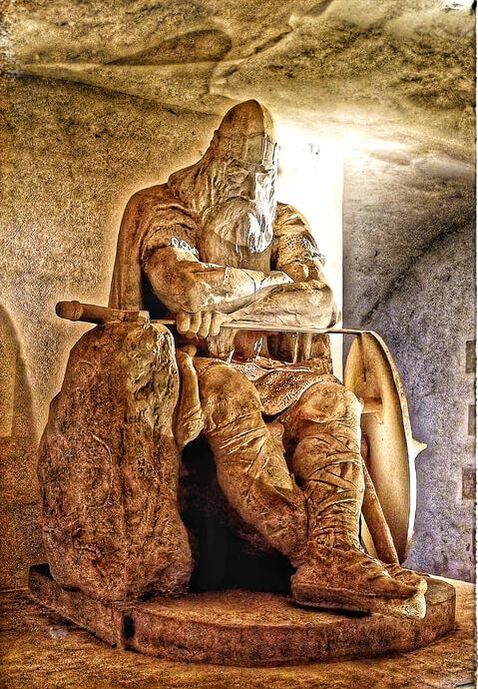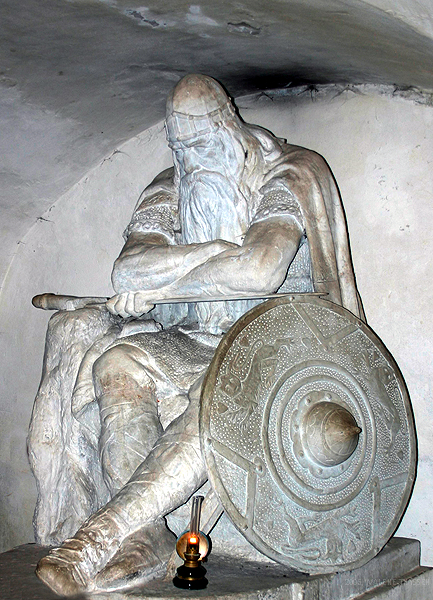“The Sleeping Hero of Kronborg: The Legend of Holger Danske”

Holger Danske, also known as Ogier the Dane, is one of Denmark’s most beloved legendary figures. Rooted deeply in medieval folklore and Viking-era stories, Holger Danske is said to be a mighty warrior who fought alongside Charlemagne. According to legend, he did not die but instead sleeps in a hidden chamber, ready to awaken and defend Denmark when the nation faces its greatest peril.

Origins of Holger Danske
Holger Danske’s legend is a blend of history, myth, and literary tradition. He appears in the French chanson de geste (epic poems) about Charlemagne as Ogier the Dane, a noble knight and fearsome Viking warrior. In Danish folklore, this character evolved into a symbol of national pride and resilience.
- Medieval Literature: The “Song of Roland” and other Carolingian epics mention Ogier the Dane as a loyal paladin.
- Viking Roots: The character embodies the archetypal Viking warrior—brave, strong, and loyal.
- Danish Folklore: By the Middle Ages, stories about Holger Danske became firmly established in Denmark, merging historical facts with mythical embellishments.
The Legend of Eternal Sleep
The most enduring part of the Holger Danske legend is his eternal slumber beneath Kronborg Castle (the castle that inspired Shakespeare’s Hamlet). The tale says:
- Holger Danske sits in a hidden chamber beneath the castle, dressed in full armor.
- His long beard has grown through the stone table where he rests.
- Each Christmas Eve, an angel visits him to check if Denmark is safe. If it is, Holger remains asleep.
- But if Denmark ever faces grave danger, he will awaken, grasp his sword, and rise to defend the kingdom.
This motif of a sleeping hero awaiting a nation’s call to arms appears in many cultures, symbolizing hope, protection, and national identity.
Symbolism and Cultural Impact
Holger Danske is more than a legend; he is a national symbol of Danish resilience and patriotism. Over centuries, the story has inspired:
- Art and Sculpture: The famous statue of Holger Danske in Kronborg Castle’s casemates, sculpted by Hans Peder Pedersen-Dan in 1907, is a powerful representation of the sleeping hero.
- Literature and Music: Danish poets and composers have celebrated Holger as an emblem of courage and protection.
- World War II: During the Nazi occupation of Denmark, the Holger Danske resistance group adopted his name, symbolizing the fight against oppression.
Historical and Modern Interpretations
While Holger Danske is a legendary figure, historians see him as a fusion of multiple historical warriors and mythical elements. His story reflects:
- The blending of Viking warrior ethos with medieval chivalric ideals.
- The use of folklore to strengthen national identity.
- The enduring power of myth in shaping cultural memory.
Today, Holger Danske remains a beloved figure in Danish culture, celebrated in festivals, literature, and tourism.

Conclusion
The legend of Holger Danske, the Viking warrior who never died but sleeps awaiting his nation’s need, continues to captivate imaginations. It embodies themes of heroism, loyalty, and eternal vigilance. From medieval epics to modern resistance movements, Holger Danske’s story remains a testament to the enduring spirit of Denmark.




